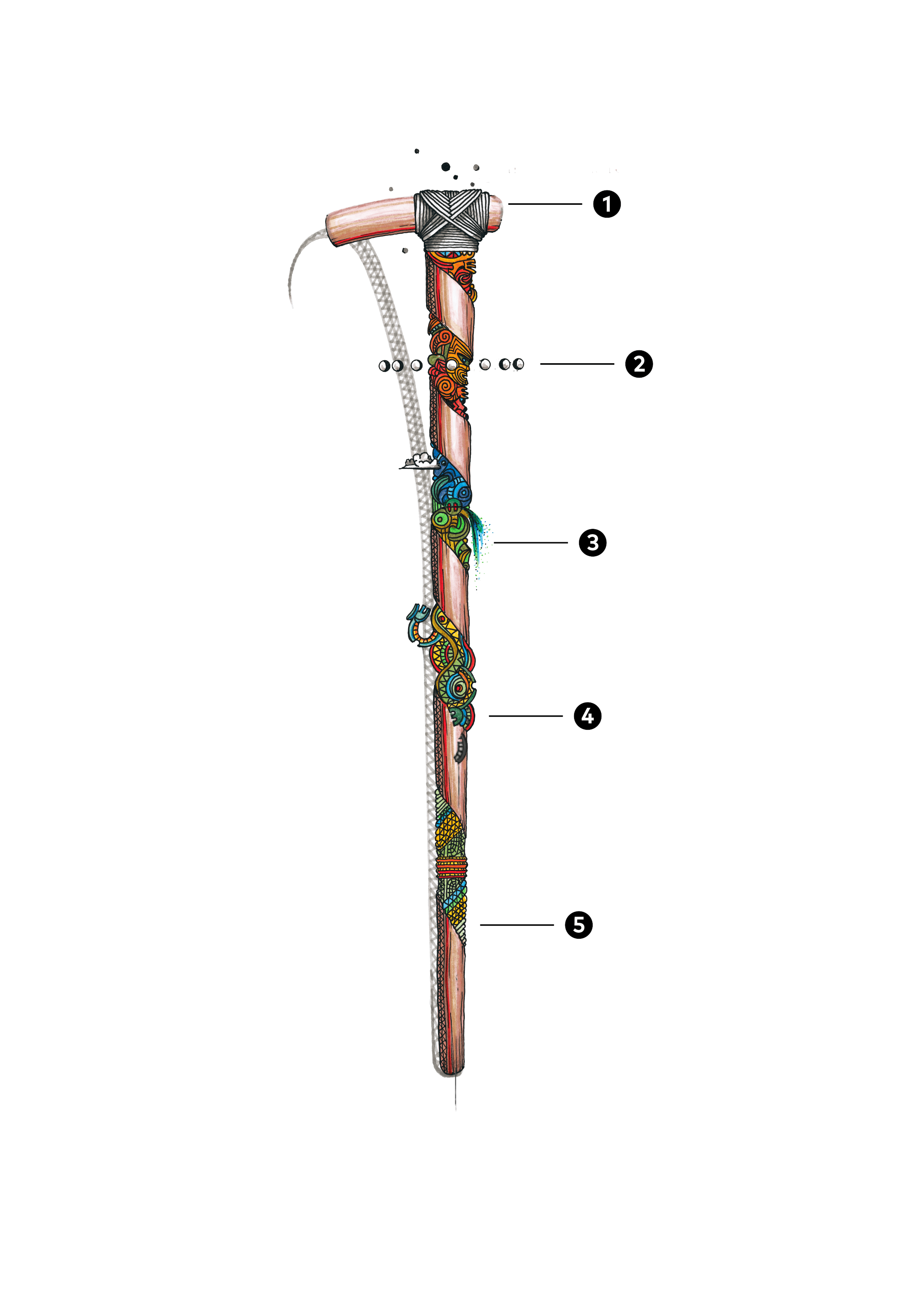The drawing of a tokotoko, the walking–talking stick held by speakers on the marae, depicts the versions of the creation myth that tells of Tāne separating Ranginui and Papatūānuku.
It was Tāne, too, who became the progenitor of humankind, so the tokotoko shaft also represents his ure. The tokotoko has small forms extending from it, with a thin shadow of aho, or fishing, lines behind. There are five sections down the shaft, which relate directly to the book’s parts: Creation; The Ancestors; The Sea to the Land; Mythical Beings; and Rarohenga.

(1) At the top, Matariki stars drift behind the handle/ure, spilling whakapapa marks. The lashing of the handle’s binding symbolises the whakapapa or the layered stages of creation itself (Te Kore, Te Pō, Te Ao, etc). A crushed Māui attempts to separate the handle from the shaft, the first part of the creation.
(2) Beneath this, a moon cycle orbits the ancestors.
(3) The water cycle (encompassing cloud, waterfall and rainbow colours) floats from the third part of the tokotoko, referencing the Sea to the Land section.
(4) Further down, taniwha arms escape from the tokotoko to depict the mythical beings.
(5) The fifth part of the book, Rarohenga or the underworld, is represented with whakarei lines (customary whakairo or carving ornamentation).
Ngā mihi —
James F. Ormsby













